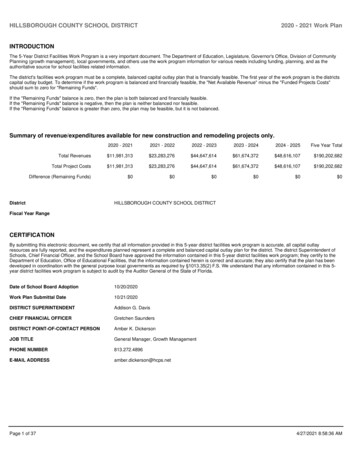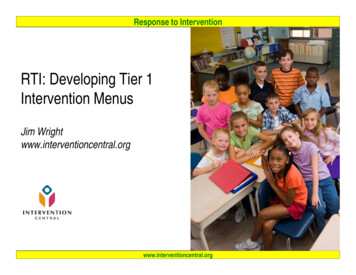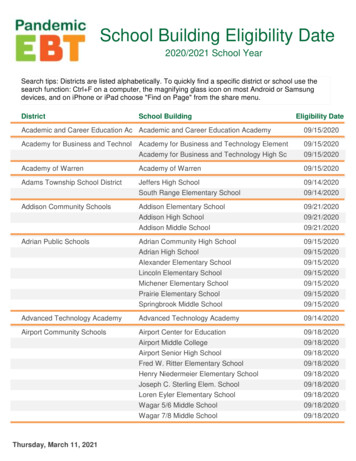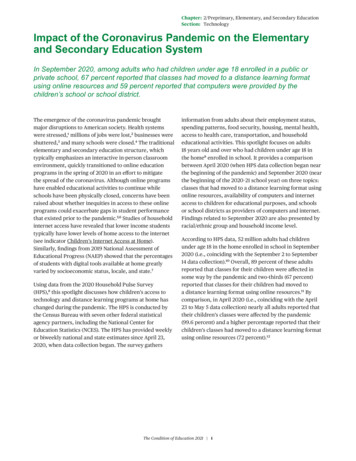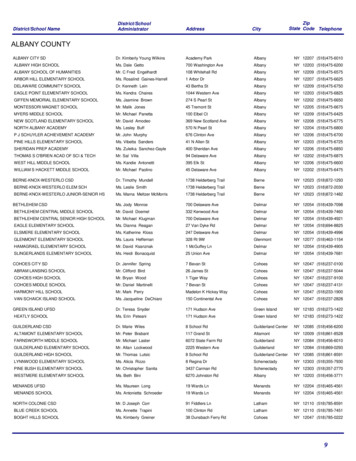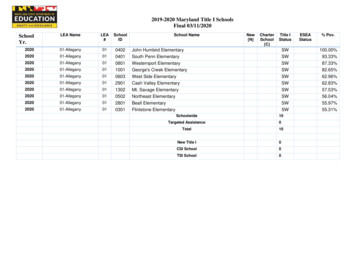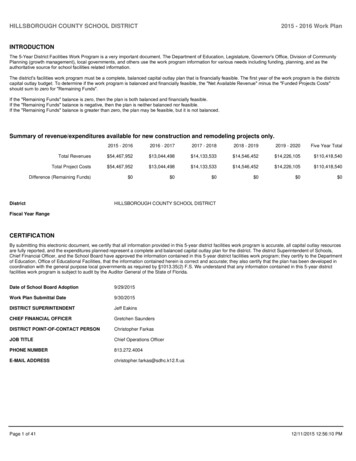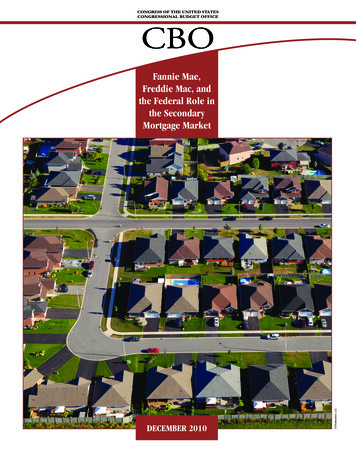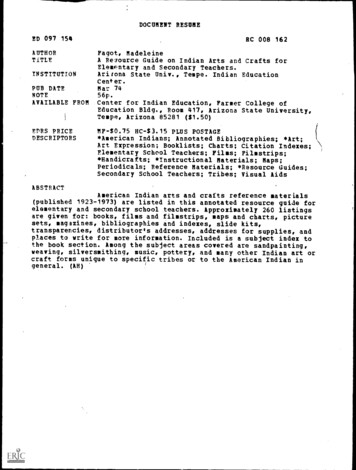
Transcription
DOCUMENT RESUMEED 097 154AUTHORTITLEINSTITUTIONPUB DATENOTEAVAILABLE FROMEPRS PRICEDESCRIPTORSRC 008 162Fagot, MadeleineA Resource Guide on Indian Arts and Crafts forElementary and Secondary Teachers.Arizona State Univ., Tempe. Indian EducationCenter.Mar 7456p.Center for Indian Education, Farmer College ofEducation Bldg., Room 417, Arizona State University,Tempe, Arizona 85281 ( 1.50)MF- 0.75 HC- 1.15 PLUS POSTAGE*American Indians; Annotated Bibliographies; *Art;Art Expression; Booklists; Charts; Citation Indexes;Elementary School Teachers; Films; Filmstrips;*Handicrafts; *Instructional Materials; Naps;Periodicals; Reference Materials; *Resource Guides;Secondary School Teachers; Tribes; Visual AidsABSTRACTAmerican Indian arts and crafts reference materials(published 1923-1973) are listed in this annotated resource guide forelementary and secondary schoolteachers. Approximately 260 listingsare given for: books, films and filmstrips, maps and charts, picturesets, magazines, bibliographies and indexes, slide kits,transparencies, distributor's addresses, addresses for supplies, andplaces to write for more information. Included is a subject index tothe book section. Among the subject areas covered are sandpainting,weaving, silversmithing, music, pottery, and many other Indian art orcraft forms unique to specific tribes or to the American Indian ingeneral.(AH)
II.1BEST COPY AVAILABLECUU 7o74Critted Crdifor Elementary and Secondary TeachersMarch 1974U S DEPARTMENT OF HEALTHEDUCATION I WELFARENATIONAL INSTITUTE OFEDUCATIONToo, DOI LW( N Tlit I N kE PRODo( f D I. *A(,TI 'tAS PtItivf D 1 NOMTut Pt 4 '.ON OF.011r.AN1/1.1.0NA7IT POINTS 01 VIE I': OW OPINIONS',TAT[() 00 NOI NI111.--1(F ',S.11411 Y WI PRIN T 011 I ,At NATIONAL INStMILT(I Du( A I ION PC),,1 f IONCIO POI If-1111.-0 Preparedby:tiC)MADELEINE FAGOTrui4Center for Indian EducationCollege of EducationArizona State UniversityTempe, .-1Mrr4,1UrVIR
iINTRODUCTIONInterestin American Indian arts and crafts has increased tremendouslylin the past couple of years.This guide was compiled in the hopes that itwould help interested teachers find resources that could be used in teachingboth Indian and non-Indian children about Indian arts and crafts.Without the encouragement and guidance of Dr. Harry Sundwall and Mr.George Gill this guide could not have been completed.I extend thanks alsoto Gwyn Keech and Melody Grieves for their time and patience in typing andcompiling this guide.Lynn FagotMarch 1974
iiTABLE OF CONTENTS11troductionBooks1.Films and Filmstrips27Maps and Charts37Picture Sets37Slide Kits37Transparencies38List of Distributors39Supplies41Magazines, Indices, Bibliographies42Places to Write for More Information45Index to Book List48
"A.Abbott, Charles C., M. D. Primitive Industa:or Illustrations ofthe Handiwork, in Stone Bone and Clay of the Native Races of theNorthern Atllntic Seaboard of America. George A. Bates, Salem,Massachusetts, 1881, 560 pp.Index, footnotes.This is a detailed, technical book on implements of stone,bone and clay.It gives information on manufacture and use ofthese artifacts.2.Adair, John.Nava o and Pueblo Silversmiths. University of OklahomaPress, Norman, Oklahoma, 1970 (reprint 1944), 220 pp. Index,bibliography.The book is divided into two sections. The first deals withthe Navajo silversmith, the second with Zuni silversmiths. Eachsection deals with history and today's work.3.MuseumAlexander, C. I. An Introduction to Naval Sandpaintings.of Navajo Ceremonial Art, Inc., Santa Fe, New Mexico, 1967, 24 pp.Bibliography.A very good, concise information source, this booklet answerssuch questions as: What is meant by sandpaintings? What do theyrepresent? Why are they made? How are they made?4.Amsden, Charles Avery. Nnmajo Weaving: Its Technic and History.Index,Fine Arts Press, Santa Ana, California, 1934, 261 pp.bibliography, plates (color and black and white).This interesting, informative book is divided into two mainparts.Part I deals with the technics of Navajo weaving emphaPart IIsizing types of looms, dyes,. weaves and uses of textiles.discusses the history of Navajo weaving from the introduction ofthe first sheep to the present revival.5.Anton, Ferdinand and Frederick J. Dockstader. Pre-Columbian Art andHarry N. Abrams, Inc., New York, 264 pp.Later Indian Tribal Arts.Bibliography and index, plates (color and black and white).Part two of this book covers art mainly of North America.It has a brief written text dividing art into areas of the country.It includes beautiful color prints of many types of art.6.DoverAppleton, Leroy H. American Indian Design and Decoration.Publications, Inc., New York, 1971, 277 pp. Bibliography, indexto plates and stories.This book divides North and South America into geographicareas using stories and legends to illustrate the people of the
2Included are large sections of illustrations of designs,pottery and weaving.areas.7.Bailey, Richard C. Collector's Choice: McLeod Basket Collection.Kern County Historical Society, Bakersfield, Californ' a, 1951,36 pp.Bibliography.The booklet contains a brief account of the efforts of EdwinMcLeod to collect baskets of the Yokut Indians of California.Descriptions of the basket- m'king technic are included.8.Barclay, Isabel. Art of the Canadian Indians and Eskimos. NationalGallery of Canada, National Museum of Han, Queen's Printer, Ottawa,Canada, 1969, 18 pp. Illustrations.This booklet is published for young people on the exhibition.It gives a brief historical background on the Arctic Indian,Woodland Indian, Plains Indian and Indians of the Northwest Coastof Canada.Illustrations are accompanied by brief descriptionsin both English and French. Emphasized are carvings and clothingarticleo.9.Barnett, Franklin. Dictionary of Prehistoric Indian Artifacts ofthe American Southwest.Northland Press, 1973, 130 pp. Bibliography and glossary.This book was compiled for the purpose of providing theamateur archeologist with terms used by the professionals indescriptions of their finds.It limits itself to material foundin Southwestern sites. Tools and utensils are some articlesincluded in the dictionary. Baskets, pottery and weaving are notincluded.10.Bennett, Edna Mee and John F. Bennett. Turquoise Jewelry of theIndians of the Southwest.Turquoise Books, Colorado Springs,Colorado, 1973, 148 pp. Bibliography.This beautifully illustrated book contains many color platesfeaturing examples of the various types of turquoise jewelry.The text discusses Navajo and Zuni work mainly. Technic anddesigns are covered in this book. It is a good audio-visualsource and background materials book.11.Bennett, Noel and Tiana Bighorse.Working with Wool--How to Weavea Navajo Rug. Northland Press, Flagstaff, Arizona, 1971, 105 pp.Suggested readings, illustrations, appendix.This is a resource book on the Navajo approach to weaving.Among one of the listed reasons for this book is to answer the
3request of school administrators to formulate and develop a Navajoweaving program.Contents include: getting started, warping theloom, weaving basics, beginning to weave, remedies (what to dowhen things go wrong), supply sources and appendix.12.Bleeker, Sonia. The Eskimo: Arctic Hunters and Trappers.Morrow and Company, Inc., 1959, 160 pp.Illustrations.WilliamThis book describes the arts, customs and occupations of theEskimo people.13.Breazeale, J. F.Arizona ArchaeologicalThe Pima and His Basket.and Historical Society, Tucson, Arizona, 1923, 146 pp.This is a monograph on the "impressions of the art of thePima Indians, gained during a two year stay on the reservation"by the authors. It discusses the Pimas, their history and basketry.14.Brody, J. J.Indian. Painters and "white Patrons.University of NewMexico Press, Albuquerque, New Mexico, 1971, 238 pp.Illustrations,index and selected bibliography.This book gives a good introduction to describing variousregional art of the country. Later in the book the chapters dealwith the influence of whites on the Indian art.Discussed isIndian art as developed by themselves and through other sourcesof learning, such as institutions. This is a good backgroundbook on painting by Indiana.Given is a brief discussion oncertain painters and characteristics of geographic area paintings.There are 187 significant Indian painters listed.15.Burnett, E. K.Inlaid Stone and Bone Artifacts from SouthernCalifornia. Museum of the American Indian, Heye Foundation, NewYork, 1944, 59 pp.Bibliography, 71 plates.This is a catalogue of shell inlay artifacts gathered fromexcavations and purchases in California. Types of articles discussed include beads, blades, bowls, canoes, flutes, pipes, andjars.Most discussions on artifacts is centered around description of material used LI the artifact.16.Bushnell, G. H. S. and Adrian Digby.Ancient American Pottery.80 plates.Faber and Faber, 24 Russel Square, London, 1955, 51 pp.This book contains one chapter on the Southwest pottery ofthe Anasazi, Hohokam, Mogollon, with plates. It is a good historical background book.
417.Buttree, Julia M. The Rhythm of the Redman. A. S. Barnes andCompany, lnc., New York, 1930, 280 pp.Index and bibliography.Contains a section on Indian Arts by Ernest Thompson Seton.Articles discussed include the tepee, warbonnet, moccasins, breechclout, buttons, buffalo skull, drums and shields, canoe decorations,paddles, and peace pipes.Instructions for making some of thesearticles are included.18.Chapman,Studylogy,(someKenneth M. The Pottery of Santo Domingo Pueblo: A Detailedof Its Decoration. Memoirs of the Laboratory of AnthropoSanta Fe, New Mexico, 1936, 192 pp. Bibliography, 79 platestri-color).The first 40 pages of this book present background information an the pueblo, the pottery, its forms, uses, technology,decoration and symbolism. The rest of the book contains platesof designs found on the pottery with descriptive paragraphs oneach plate.This is a nice audio - visual material and backgroundinformatIon book.19.Cohoe.A Cheyenne Sket "hbook. University of Oklahoma Press, Norman,Oklahoma, 1964, 96 p . Index.This book about Cohoe, Indian captive at Fort Marion,Florida, contains his sketches of Indian life and a text on hislife there.20.Collier, Donald.Indian Art of the Americas.Chicago Natural History Museum, Chicago, Illinois, 1959. Suggested readings, 106plates, and index to plates.This is a catalogue of exhibited articles in black and white.Empharis is mostly on masks, pipes and figurines.21.Colton, Harold S. Hopi Kachina Dolls with a Key to Their Identification.University of New Mexico Press, Albuquerque, New Mexico,1959, 150 pp.Bibliography and index.Described in this book is the Kachina doll, how it is made,and principal features.It discusses descriptions of Rachinadolls, Hopi deities and how to identify Kachina dolls. Alsocontained are many detailed black and white drawings of Kachinaheads to help illustrate the identification key and de3criptionsection.
522.Colton, Mary-Russell Ferrell. Hopi Dyes. Museum of NorthernArizona, Flagstaff, Arizona, 1965, 87 pp. Bibliography.A detailed book on types of dyes used in cotton, woolweaving avid basketry and leather work.Given are recipes forpreparing dyes.23.Conner, Stuart and Betty Lu Conner. Rock Art of the Montana HighPlains.The Regents, University of California, Santa Barbara,California, 1971, 67 pp.Bibliography and black and white illustrations.This is a catalogue of an exhibit at the Art Galleries,University of California, Santa Barbara. Following the introduction, the authors give a detailed description, with some background information, on each piece in the exhibit. The last section of the book contains the illustrations described.24.Covarrubias, Miguel. The Ea le, the Ja uar and the Ser ent: IndianArt of the Americas, North America: AlaskaL Canada, the UnitedStpf.es.Alfred A. Knopf, New York, 1954, 314 pp. Bibliographyand index.The first part of the book discusses the history and originsof Native American art. Also included is a section discussingthe "technique and aesthetics" of the art of basketry throughpainting and lacquer. The second part of the book discusses artin relation to the various geographical areas of North America,This is an excellent resource and visual aid book.25.Cummings, Byron.First Inhabitants of Arizona and the Southwest.Cummings Publication Council, Tucson, Arizona, 1953, 251 pp.Bibliography, appendix, and index.This book contains a section on the manufacturing of articlessuch as weapons, textiles, ornaments and pottery with over 140plates.It explains simply how the articles are made and whatthey are used for.Pictures accompany explanations of the artifacts frequently.26.D'Amato, Alex and Janet D'Amato.American Indian Craft Inspirations.M. Evans and Company, 1972, 256 pp.Illustrations.This book describes a variety of Indian artifacts fromdifferent cultural areas.Some items included are jewelry,clothing, accessories and household items. The discussion includes "how-to" information and gives background information.The book then develops contemporary work.
627.DiTaetment of Indian Art.Denver Art Museum Indian Leaflet Series.Frederic H. Douglas, Curator, Denver, Colorado.This is a series of leaflets covering many different aspectsof Indian art.Information can be obtained by writing F. H. Douglas,1300 Logan Street, Denver, Colorado.28.Dockstader, Frederick G.Indian Art in America: The Arts andCrafts of the North American Indian. New York Graphic Society,Greenwich, Connecticut, 224 pp.Bibliography.The basic purpose of this book according to the author is to"gather together a general selection of some of the finer examplesof North American Indian art, together with some specimens ofeveryday craftmanship which possess unusual aesthetic qualities.It is hoped (the author goes on to say) that the reader will gainsome understanding of what had been before the white man came- and what happened to that art since." The first section discussesart and the Indian. The second presents plates and commentarieson the examples shown.Good audio-visual and background materialsatt. preaented.29.Douglas, Frederic H. and Rene D'llarnoncourt.Indian Art of theUnited States.The Museum of Modern Art, New York, 1941, 219 pp.Bibliography.This book is based on a exhibition prepared by the IndianArts and Crafts Board of the United States Department of Interior.The book features two main areas of Indian art--prehistoric and"living traditions" or art of recent times.Each plate is explained by a brief paragraph or two under it.30.Drucker, Philip.Cultures of the North Pacific Coast. ChandlerPublishing Company, San Francisco, California, 1965, 243 pp.Index, bibliography and color plates and black. and white illustrations.The first five chapters of this book discusses general characteristics, customs and beliefs of the North pacific Coast Indians.Included in these are several sections on art, weaving, stonework,musical instruments, woodwork, dress and ornaments. The lastfive chapters take individual groups and discuss their particularcultures, including some discussion on art.31.Duff, Wilson, LAD Holm and Bill Reid. Arts of thejaven: Jlasterworks by the Northwest Coast Indians. The Vancouver Art Gallery,1967.arts.This is a catalog of an exhibit on Northwest Coast I-IdianIt contains many plates in variouc aspects of the At of
that area. Also included is a short discussion on the backeroundand history of the people and their art.32.Dunn, Dorothy.American Indian Painting of the Southwest PlainsAreas. The University of New Mexico Press, Albuquerque, NvwMexico, 1968, 429 pp. Bibliography, 32 plates.The book, written by the director of Santa Fe's IndianSchool in the 1930's, is an art book.The first section containsa dtscussien of the prehistoric and early historic backgrounds ofIndian painting. The second half deals with modern Indianpainting after 1900.33.Dutton, Bertha P. Indians of the Southwest: A Pocket Handbook.Southwestern Association on Indian Affairs, Inc., Santa Fe, NewMexico, 1963, 160 pp. Reading lint, calendar of ceremonies.This handbook contains a section on arts and crafts discussingbaskets, textiles, pottery, jewelry and kachinas. Mostly historicaland background information is given. There is little informationon technics.34.Dutton, Bertha P.Navajo Weaving Today. Museum of New Mexico Press,Santa Fe, New Mexico, 1961, 43 pp. Suggested readings.This is a very nice, brief introductory book to Navajoweaving.It presents a short history of the craft, a short discussion on the weaving preparations. The greater section of thebook discusses the various regional rugs and their characteristics.This is a good reference book.35.E'er, Dorothy.Pitseolak: Pictures Out of My Life.University ofWashington Press, Seattle, Washington, 1971, unnumbered pages.This is a translated, transcribed tape recording of an oldEskimo woman's life. Accompanying the text are sketches done bythe woman, depicting life as she remembered it. The text iswritten in English and Eskimo. This is an interesting bookbecause of Eskimo language used.36,Evans, Glen T. and T. N. Campbell.indian Baskets of the PalaSeashore Collection. Texas Hemorial Iluseum, Austin, Texas, FPO65 pp.Briefly discussed arc materials and techniques of basketryand a short story of a certain Pima basket and how It was made.It gives details of the life ant land of the Pima and Papago.The rest of the book discusses various types oi basLotry bydifferent tribes.
37.Exposition of Indian Tribal Arts, Inc. The Introimetinn TuIndian Art.Exposition of Indian Tribal Arts, Inc., NvNew York, 1931.1YortiPart I gives a brief description of various Indian erdftL;in the context of their beauty rather than utili-Y. it discusethe whitemnn's affect on degrading these arts. Covered in thiapart is weaving, notterv, basketrv, jewelry and painting. Partcontains senarate articles by various authors on such topics :"Fine Art and the First Americans, Sand naintinps of the NanAloIndian, Indian Symbolism, Indian Poetry, "odern Indian Paintirn.Indian Pottery, Indian Sculpture and carving, Indian "asks,Indian Basketry, Indian qeaving, Indian Porcunine' -nuiil andBeadwork." This nart has an extensive bibliorrnnbv on art!-, andtheir interpretation, dances and ceremonies, legends andmusic and song.31.Feder, Norman.North American Indian Painting. The rnseu of nfil-1tive Art, Manhattan Art Press, Inc., New York, New vor!,, 196/,24 np., bibliography.Briefly discussed are wood paintings of the Northwen,tIndians, plains hides, Navajo sandpaintincs, prehistoric Coutwest wall naintings on kivas, Chumash California rock nietovraehHand Texas peliographs. The book gives interesting historicalbackground information and details on materials used in the PIinR of these artifacts and art works. Several black and ,,hitPictures of examples of the art work exhibited are !Alotfr inbook.rield, Clark. Ameri-nn Indian Pottery and Paskets.PhilhroolCenter, Tulso, Oklahmla, 1952.27 nn., Fm,PestvdThis namnblet is used as an introduction to thoand basket collections of Rbilbrool: Art Center in Tula, itdivided into three sections: one on notterv, one on kritottva third specifically on "Root Runner" basket ry.e(f hyi,4 ,agraphs give information no the baskets, but tho main valoo o,this nublication is the reading ltst of bool-qf7.0:),1and baskets.,40.Fontana, Pernard L. and others. Papnvo "Indian Poilo!of 1Tashington Press, Seattle, WaFdlineton, 19(,7,M,LlionranhY.This boo!' coptains a dc,tntlod nection us rhor mal(int? PripaPo pottery as carried out Coda,, 111;1thiHOiqctplqi0P of the cultural sienfficancoPHr, rH1.r
BLS! cry191,1!1"'r"r341.Garfield, Viola E. and Linn A. Forrest. The Y'olf and the Raven:Totem Palesof Southeast Alaska. University of Ilashington Press,.me ftSeattle and London, 1948.148 pp.Bibliography.emeo . mmweeeeewee.This book discusses various totem pole narks in Alaska,their poles, meanings and legends that go with the poles.42.Glubok, Shirley. The Art of the North American Indian.Row, Publishers, New York, New York, 1964. 46 pp.harper andThis is a good children's book covering woodcarving,'weaving,quill and beadwork, kachinas, skin paintings, sandpaintings, not terv, rug weaving, pipes, and others. With each plate there. is aneyplklaation of what the obiect is used for and/or how it is made,:It can be read aloud in the classroom for discussion. The illustrations are numerous.43.Goldfrank, Elsie.Isleta Paintings. Smithsonian Institution Press,Washington, D.C., 1962. 160 nn. Bibliography, glossary.This book is a collection of watercolor paintings (shownin black and white) done by an Isleta: man depicting various aspects of life on the Isleta pueblo. The.text explains the pictures.44.Grant, Campbell.P /ck Art of the American Indian. Thomas V. CrowellCompany, New Yorlt, New York, 1967.178 np. Index, bibliography,suggested reading.This book looks at rock art artistically and anthropologically. Part one discusses the "Artists and their Art" includingdiscussions on background techniaue,stylea, and interpretations.Part two covers took art in the various geographic areas. The bookcontains many good black and white photographs of the varioustynes of rock art.45.('rant, Campbell.The Rock Paintings of the Chumash: A Study of aC;difornian Indian Culture. University of California Press,Tierkelev, Los Angeles, 1965. 163 np/ Index, glossary, bibliography, appendix.Among the chapters in this hook are those on the histori ofthe people, their culture and paintings. Mary larRe illustrationsand interesting Information are contained in the book.46.Gunther, Erna.Indians of the Northwest Coast. Taylor. Museum of theColorado Fnrings Pine Arts Center and the Seattle Art "useum, 1951.This is the catalogue which accompanied an exhibition ofNorthwest coast art. It contains mcny plates with explanations.t
NM COPY Algairt'f.'t,in nary different asrectq of the art. Also included 4s a cPctlonon the Indians ard the materials their used.47.nunther, Erna (nlrector, Washington State Museur, University of Washington). Northwest Coast Indian Art; An Exhibit at Seattle WorldPair Fine Arts ravillion. Ceucury 21 Exposition, 'ft., 1962. trarn.This cataloPue of the oxhibit briefly eisclisses "the countryand its peonlethe aratony of the r.rt, the uses of art and somehistorical perspPctive." Accompanyilg each'nlate is A eescrintion and sometimes an exnlanntion of its un-.41. NAberland, lklfgan,-6.The Art of Worth America.Nei work, 1968. 257 pp. Index, bibliography.nregstone Press,This honk discusses various aspects of life in the geoRrahic.nrens of the P.S. corcerniqg the cultural art of thou e areas. Itis good for bacl,prourd information. It contains mi4ny.color platesand black and white illustrations.49.Harvey, Byron.Ritual in Pueblo Art - -Hopi life in WopipaintinR.This hook contains plates of rictures done by Hopi artistsdepicting events it the lives of the Hepl. With each plate Is ahrief desc:Intion of the activity Portrayer!,50.Hawthorne, Audrey. Art of the Kunkiutt Indians and other NorthwestTribes. rniversity of Washington Press, Ceattle, Washington, 1967.410 pp. Index, bibliographv, ellossary, plate's.This is A ver beautiful, interesting hook on the art of therorthest tribes. The hook to divided into two main parts. Part Igives background, historical information and Part IT presents thevarious types of ceremonial art. This is a very good resource andvisual aiTbook.51.Heard MIlseum of Antrhopoloav and Primitive Art. Pancinp Kachiras:A linni Artist's DocumentnrY. (raintints by Cluff enhnimntewn.)}hard *sew of Anthronologv and Primitive Art, Phoenix, Arlx.,1q71.18 pr. 48 color pictures, bibliogrephj.'Phis booh1et discusses the artist attic b1s 'OrX brief'''. ThemeJor part of the !,00klet catalogues his wnrt, giving sore hacl-aground Information on tho Kachines represented in the collection.Forty-elpht of his paintings are reproduced in the boohlot anddescribed in the text.
1152.Hewett, Edgar L. Ancient Life in the American Southwest. BobbsMerrill Company, Publishers, Indianapolis, Indiana, 1930, 392 pp.Index.Contained in this book is a chapter entitled "Indian Esthetics" which includes discussions on dances and drama, painting,basketry and textiles, and pottery. The discussions center mostlyaround historical background information. Scattered through thetext are suggested readings or the topic being discussed in thatchapter.53.Hill, V. W. Navajo Pottery Manufacture. University of New MexicoBulletin,'University of New Mexico Press, Albuquerque, New Mexico,1937.23 pp. References, 7 plates.This brief pamphlet discusses the various types of Navajopotteryv'their manufacture and some ritual beliefs concerning thepottery manufacture.54.Hodge, Gene Meany. The Kachinas are Coming. Published by StellerMillar, 1936. Printed by Bruce McCallister at the Adcraft Press,Los Angeles, Calif.8 color plates, 129 pp. Bibliography.A goOd description of some of the Novi and Zuni Kachinas withthe colored pictures is given in this book. This would be a goodinformation book for children to use.55.Hosfinde, Robert. Indian Games and Crafts.Inc., 1957. 128 pp.Illustrations.TTi.11iam morrow and Co.,This book contains instructions and illustrations on themaking of equipment for 12 different Indian games.56.Hooper, J. T. and C. A. Kurland. The Art of Primitive Peoples.Philosophical Library, New York, 1954. 168 pn. 68 plates.Included in this book is a section on the art of the Northwest coast Indian and the Eskimo.57.Indian Arts and Crafts Board of BIA.Comtemporary Sioux Painting.Tipi Shop, Inc., Rapid City, S.D., 1962. 80 pp. Suggested reading list.This is a catalogue of an exhibition released through theSioux Indian Museum and Crafts Center in Rapid City. The cataloguegives a brief background on past Sioux art, then discusses contemporary artists of the Sioux tribe. Accompanying the biographiesof the artists are examples of their work in black and white.
1258.Inverarity, Robert Bruce. Art of the Northwest coast Indians.University of California Press, Berkeley, Los Angeles, 1967.243 pp. Bibliography, 279 plates.This is an excellent book on this subject. The chaptersare entitled "The People, Material Culture, Social Patterns, TheArt." Not only is this book a collection of the art of the Northwest coast but it presents background material on the life of thepeople who created this art and why they created it. Each plateis explained carefully and explicitly. It is a very good resourceand visual aid book.59.Jackson, A. T. Picture Writings of Texas Indians. ,Bureau of Research in Social Sciences, University of Texas, Austin, Texas,1938. 490 pp. Index, bibliography, plates and figures.This book contains many examples of this art ranging frompictures on rocks to bones to trees to shields and on. Besidesdescriptions of designs the book also contains chapters on materials and methods, meaning, purpose and importance of picturewriting. This is a little technical, but a good resource book forthis topic.60.James, George W. Indian Basketry, and How to Make Baskets. RioGrande Press,1903. 424 pp. Index, bibliography, illustrations.This interesting book ongood resource book.baskets and bas.,tetry could be a761.Jenness, D. material Culture of the Copper Eskimo: Report of theCanadian Arctic Expedition, 1913-18. King's Printer and Controllerof Stationery, 1946, Ottawa, Canada.148 pp.This is a very extensive book into the material culture ofthese Eskimos. It includes discussions on dress and adornment,household furniture, tools and weapons, art and knots. Many illustritions accompany the text. It is a good resource book.62.Johnston, Bernice. Speaking of Indians: With an Accent on the Southwest. University of Arizona Press, Tucson, Ariz., 1970.112 pp.Suggested readings.Scattered throughout the book are brief discussions of various Southwest Indian arts and crafts with pictures for examples.63.Kahlenberg, Mary Hunt and Anthony Berlant. The Navaio Blanket.Los Angeles County Museum of Art, 1972. 111 no. Bibliography,81 plates (black and white and color.)
13This book is divided into three main sections dealing withhistory, technique and materials, and stylistic development. Thegreater part of the book consicts of large plates of various typesand designs of blankets and rugs. A brief paragraph describing thedesign motif is given with each illustration. This is a good bookfor visual aid use.64.Keithahn, Edward L. Monuments in Cedar. Superior Publishing Company,Seattle, Washington, 1963. 160 pp. Bibliography.Among the 14 chapters in this book are those on the regionand its people, the origin of the poles, types of poles, Northwest coast art, religion, the carving and erecting of a totem pole,legends in cedar-and potlashes. There are several color and manyblack and whit plates.65.Kelemen, Pal. Medieval American Art, Masterpieces of the New WorldBefore Columbus. Macmillan, New York, 1956. 447 pp. 308 plates.Included in this book are discussions and examples of architechture and sculpture, textiles, wood art, ceramics, painting,metal work, lapidary art and various others of the Americas,excepting the Northwest Pacific coast.66.Kent, Kate Peck.The Cultivation and Weaving of Cotton in the Prehistoric Southwestern U.S. The American Philosophical Society, Philadelphia, Pa., 1957. 733 pp. Index, bibliography, glossary. 143black and white figures.This is a detailed study of Southwest weaving and is a goodresource book for information on processes used in weaving varioustypes of cotton fabrics. According to the introduction, an attemptis made to explain the origin, growth, and recent decline of thecotton-and-loom complex within the Southwest, and to demonstrateits importance in the lite of the aboriginal peonie. Also discussed are topics such as the cotton plant, growing Gnd preparingit, dyes, looms, fabrics, weaves, non-loom fabrics, designs.67.Kent, Kate Peck. The Story of Navaio Weaving. Heard museum ofAnthropolo
This is a catalogue of shell inlay artifacts gathered from excavations and purchases in California. Types of articles dis-cussed include beads, blades, bowls, canoes, flutes, pipes, and jars. Most discussions on artifacts is centered around descrip-tion of material used LI the artifact. 16. Bushnell, G. H. S. and Adrian Digby. Ancient American .

